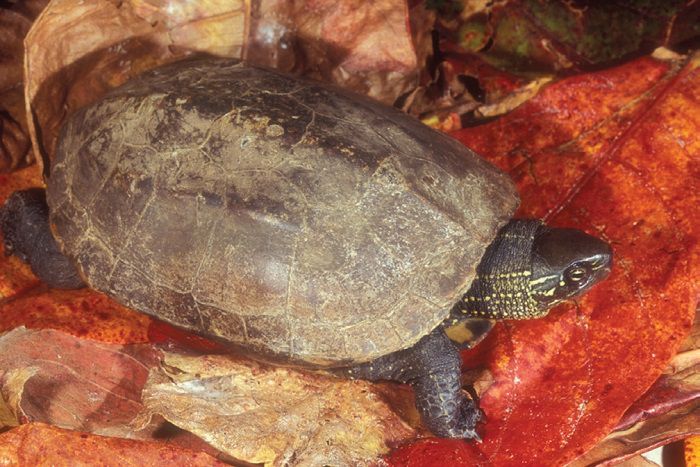Table of Contents
Being a reptile, and hence a cold-blooded creature, your aquatic turtle is unable to regulate its own temperature. It will therefore require you to provide artificial heat so that it can stay as warm as it would be in its natural habitat. However, it is not only artificial heat that you as a turtle owner must provide. Light is equally important.
In the wild, aquatic turtles are used to sunlight. More than that, they need light in order to survive. This means that when in captivity, both UVA and UVB light must be provided for them.
are used to sunlight. More than that, they need light in order to survive. This means that when in captivity, both UVA and UVB light must be provided for them.
What Lights Do You Need?
When setting up your aquatic turtle tank, you will need to invest in lighting that will include a heat lamp and a bulb that provides both UVA and UVB light. It is possible to purchase a lamp that will provide both heat and UV light. These are known as self-ballasted mercury vapor lamps and are a fantastic choice for aquariums with limited space. They can usually be purchased from a local reptile store or online. Amazon has a fantastic range of heating and lighting options. Click here to check them out (opens in a new tab).
(opens in a new tab).
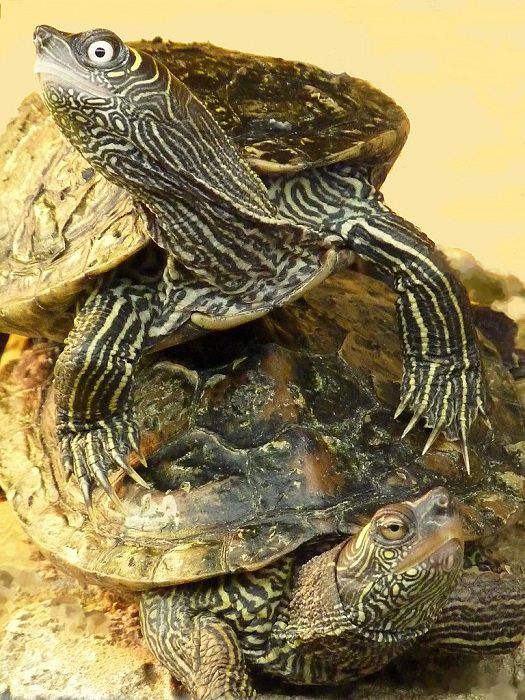
One of the downsides of using the above-mentioned mercury lamps though is that these do tend to consume far more electricity than using separate fluorescent and halogen lamps. So if you want to keep your costs and energy consumption down, it is probably best to purchase separate heat and UV lamps for the aquarium.
UV tube lamps are an excellent choice as they can be clipped under the lid of the tank and provide a good source of light throughout the tank. It is important to remember that the UV lamp should not be placed on the outside of the tank as the (UV) light is unable to penetrate glass.
For aquatic turtles, UV lamps should be a maximum of 5 per cent UVB and are commonly referred to as swamp UVB or tropical UVB lamps. You may also come across desert UVB lamps, but these are not recommended for aquatic turtles as they are primarily designed for reptiles that hail from desert regions (for example, bearded dragons).
Basking lights are required for heat and are often referred to as daylight lamps. A basking lamp should be placed above the basking area in order to raise the temperature of this part of the tank. The temperature of the basking area should be between 85F and 90F.
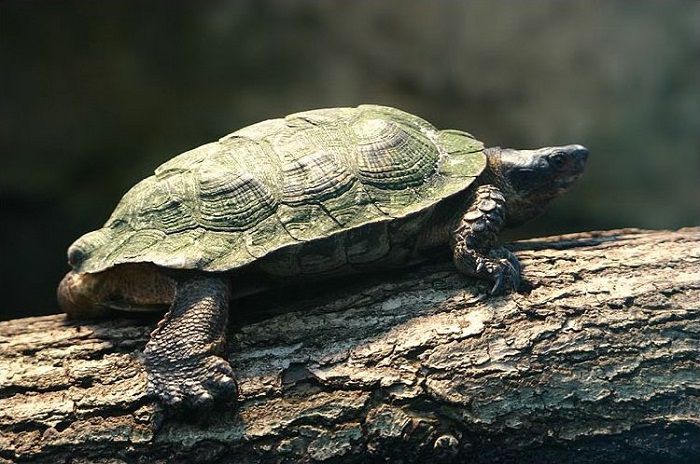
Wood Turtle 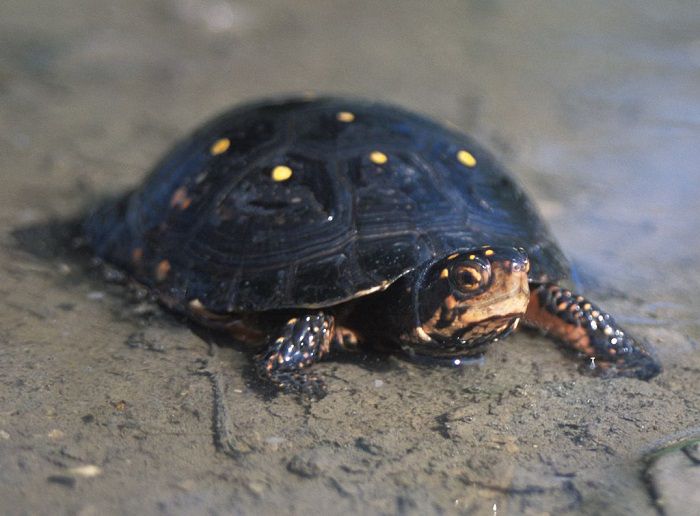
Spotted Turtle 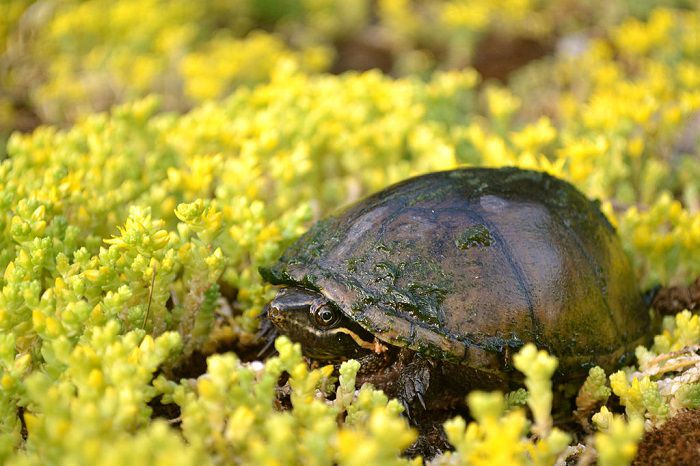
Stinkpot Turtle
Why Do Turtles Need Light?
Turtles need light in order to help regulate their circadian rhythm. They require a day/night schedule to thrive and without it they will find it difficult to sleep. It is necessary then that turtle keepers provide at least 10-12 hours of light for their turtles every day. The lights should then be switched off at night so that the turtle will know it is time to sleep . Most people use timers to do this for them. Timers can be purchased online or at a local hardware store (see a collection here at Amazon
. Most people use timers to do this for them. Timers can be purchased online or at a local hardware store (see a collection here at Amazon ).
).
Both UVA and UVB light are essential to the health and wellbeing of aquatic turtles. UVA light helps with breeding and ensures your turtle stays active. UVB light is necessary for turtles as without it they are unable to synthesize vitamin D3, which is required for the absorption of calcium.

Eastern Box Turtle 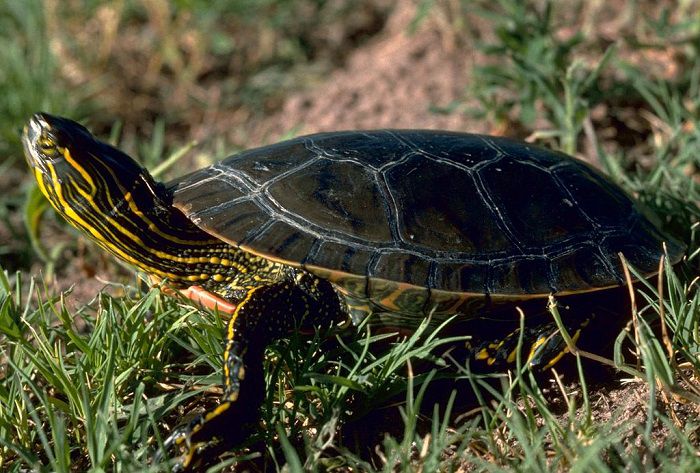
Western Painted Turtle
It is the vitamin D3 that enables turtles to use the calcium they have ingested from food. If they cannot absorb the calcium from their food, their body will start to draw calcium from their bones, which will in time lead to weakness and soft bones. Calcium deficiency in turtles can eventually cause metabolic bone disease (MBD), which can be fatal if left untreated.
Conclusion
Light is required by turtles in order for them to stay healthy and grow properly. You will need to provide UVA and UVB light as well as a regular day/night schedule with at least ten hours of light every day.
properly. You will need to provide UVA and UVB light as well as a regular day/night schedule with at least ten hours of light every day.
Photo Credits:
- Featured Image (Chinese Pond Turtle): Mark O’Shea – CC BY 3.0

- Mississippi Map Turtle: A. Lange
 – CC BY 3.0
– CC BY 3.0
- Stinkpot Turtle: Ontley – CC BY 3.0

- Spotted Turtle: John J. Mosesso, NBII – public domain
- Wood Turtle: Wilfried Berns
 – CC BY-SA 2.0 DE
– CC BY-SA 2.0 DE
- Western Painted Turtle: Gary M. Stolz/U. S. Fish and Wildlife Service – CC BY 3.0

- Eastern Box Turtle: Stephen Friedt
 – CC BY 3.0
– CC BY 3.0

